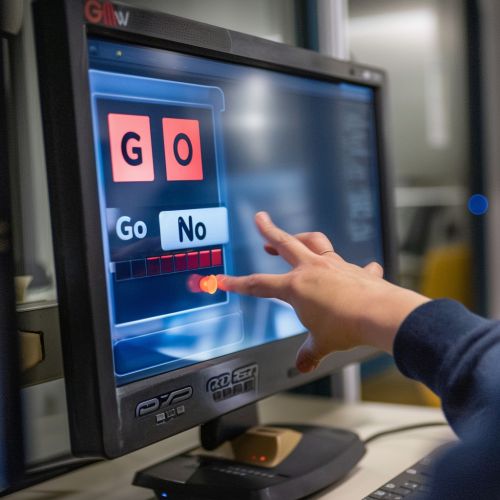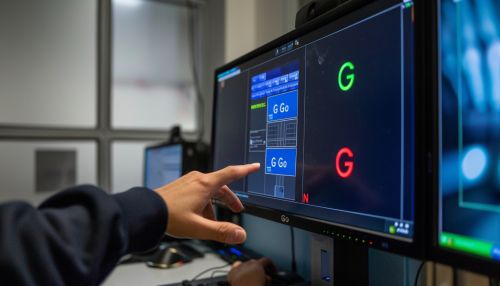Go/No-Go Task
Introduction
The Go/No-Go task is a type of cognitive task used in psychological and neurological research to measure a person's response inhibition and impulsivity. This task is often used in the study of cognitive control, ADHD, substance abuse, and other related fields.
Overview
In a typical Go/No-Go task, participants are presented with a series of stimuli and are instructed to respond (the "Go" condition) or not respond (the "No-Go" condition) depending on the nature of the stimulus. The task is designed to assess an individual's ability to withhold or inhibit a prepotent or dominant response.


History
The Go/No-Go task has its roots in the early 20th century, when researchers began to study the concept of inhibition in psychology. The task has since been refined and adapted for use in various research contexts, including cognitive psychology, neuroscience, and clinical psychology.
Procedure
In a standard Go/No-Go task, participants are presented with a series of stimuli, typically visual or auditory, and are instructed to respond as quickly and accurately as possible to the "Go" stimuli and to withhold their response to the "No-Go" stimuli. The stimuli can be letters, numbers, colors, shapes, or any other distinguishable features.
Variations
There are several variations of the Go/No-Go task, each designed to probe different aspects of cognitive control. These variations include the Stop-signal task, the Delayed response task, and the Stroop task.
Measures
The primary measures in a Go/No-Go task are the number of correct responses (hits), the number of incorrect responses (false alarms), the reaction time for correct responses, and the omission errors (misses). These measures provide information about an individual's ability to inhibit responses and the speed and accuracy of their responses.
Applications
The Go/No-Go task has been used in a wide range of research areas, including the study of ADHD, substance abuse, Parkinson's disease, Schizophrenia, Traumatic brain injury, and aging. It is also used in the study of cognitive control and executive functioning.
